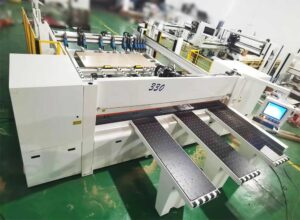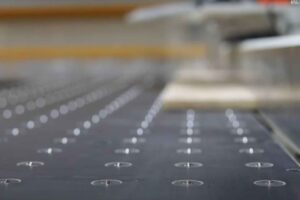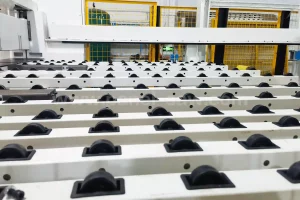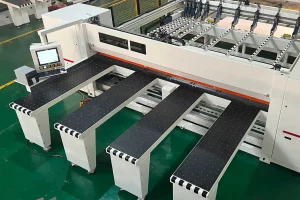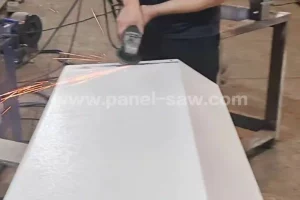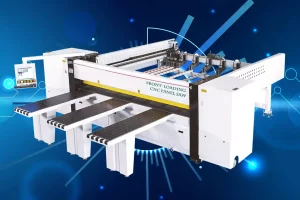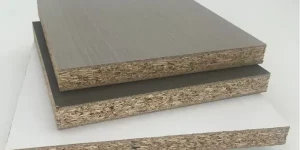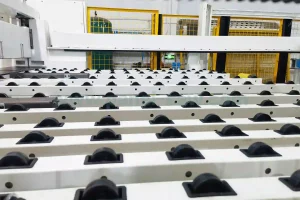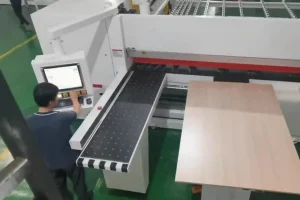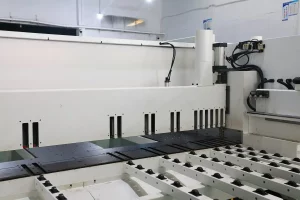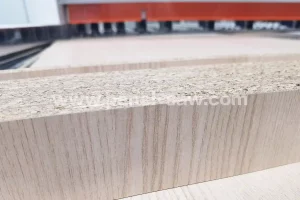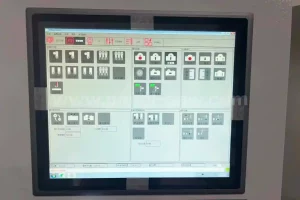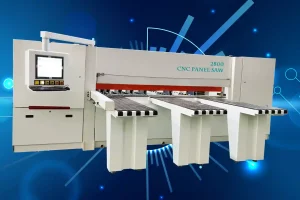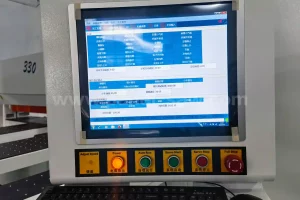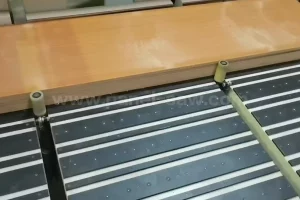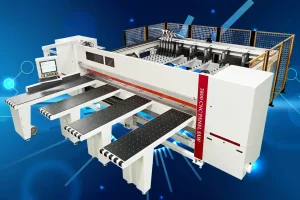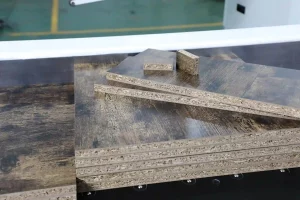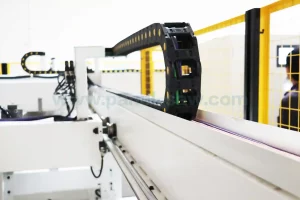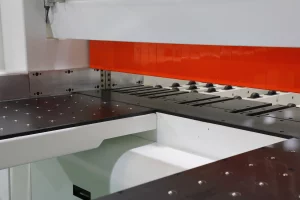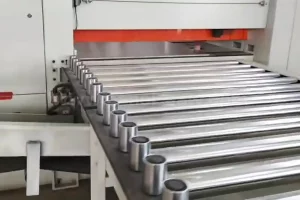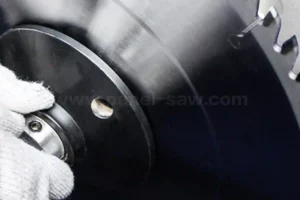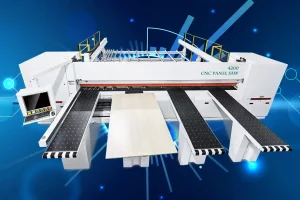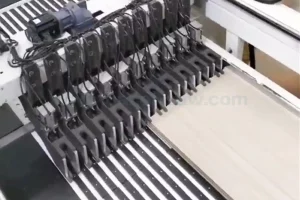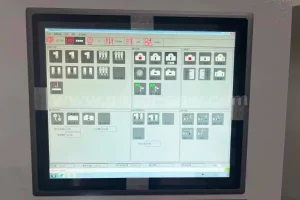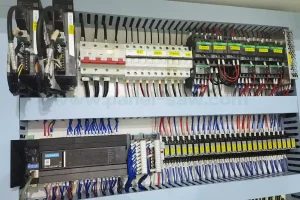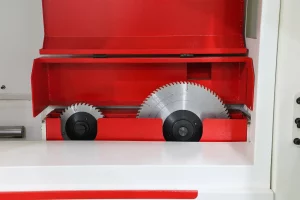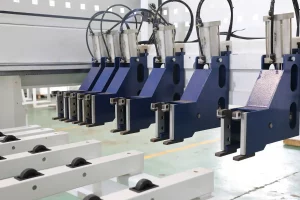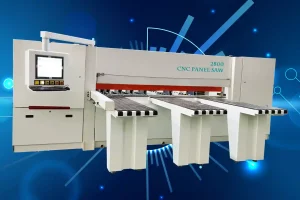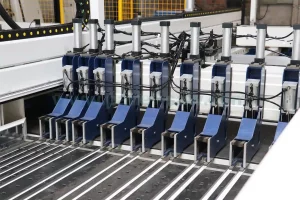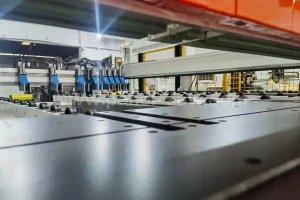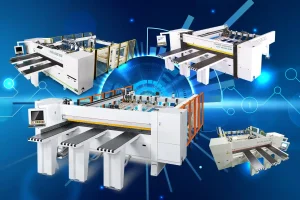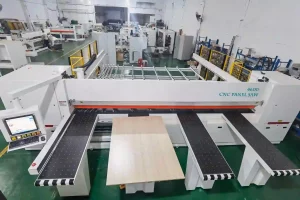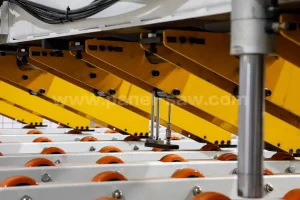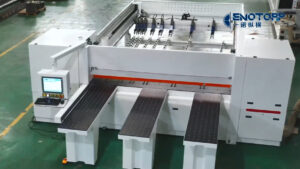
Precision Processing CNC Panel Saw Technology: Capabilities and Applications
The Precision Processing CNC Panel Saw represents a pinnacle of technological advancement in woodworking and fabrication. This innovative tool seamlessly integrates Computer Numerical Control (CNC) technology with advanced blade and motor systems to deliver unmatched precision and efficiency in cutting panels and sheets of various materials. Its capabilities extend beyond traditional sawing methods, offering precise control over both straight cuts and intricate designs.
Precision in Action: How CNC Panel Saws Work
At the heart of the Precision Processing CNC Panel Saw is its sophisticated control system, which interfaces directly with digital models or blueprints generated from design software. These digital instructions are translated into precise movements of the saw’s blade, ensuring each cut follows the designated path with exceptional accuracy. The advanced blade and motor systems work in tandem to produce clean, burr-free cuts, even on thick materials where precision is paramount.
Conclusion: The precision and efficiency of the Precision Processing CNC Panel Saw not only streamline production processes but also elevate the standard of accuracy in modern woodworking and fabrication.
Versatility Across Materials: How Precision Processing CNC Panel Saw Handling Diverse Substrates
One of the standout features of the Precision Processing CNC Panel Saw is its versatility in handling a wide array of materials. From traditional substrates like plywood and MDF to more complex materials such as solid wood and composite boards, this tool adapts seamlessly. Its ability to maintain tight tolerances and execute intricate details makes it indispensable in industries where material flexibility is key to meeting diverse project demands.
Conclusion: The adaptability of the Precision Processing CNC Panel Saw ensures it remains a cornerstone tool in modern manufacturing, capable of meeting the varied needs of different sectors.
Applications Across Industries: From Furniture to Cabinets
The primary application of Precision Processing CNC Panel Saws spans various industries, each benefiting uniquely from its precision and efficiency. In furniture manufacturing, these saws excel in accurately cutting panels and components, ensuring consistency in quality while minimizing material wastage. Similarly, in construction, they are pivotal for precise cutting of building materials like gypsum boards and insulation panels, enhancing productivity and reducing labor costs.
In high-precision industries such as aerospace and automotive manufacturing, the demand for accuracy and reliability is paramount. Precision Processing CNC Panel Saws meet these stringent requirements by enabling precise cuts on complex geometries, thereby ensuring the functionality and structural integrity of critical components.
Conclusion: From enhancing productivity in construction to meeting stringent quality standards in aerospace, the Precision Processing CNC Panel Saw proves indispensable across a spectrum of industries, driving innovation and efficiency.
Future Trends and Innovations: Evolving with Technology
As technology continues to advance, so too does the capability of Precision Processing CNC Panel Saws. Future innovations are likely to focus on integrating Artificial Intelligence (AI) and machine learning algorithms to further enhance automation and predictive maintenance capabilities. These advancements will enable saws to adapt dynamically to changing production demands, optimizing performance and efficiency.
Moreover, the integration of Internet of Things (IoT) connectivity will facilitate real-time monitoring and remote diagnostics of CNC panel saws. This connectivity empowers manufacturers to monitor performance metrics, identify potential issues proactively, and optimize operational efficiency across multiple production lines.
Conclusion: The future of Precision Processing CNC Panel Saw technology promises even greater efficiencies and capabilities, driven by continuous innovation and integration with cutting-edge technologies.
In summary, Precision Processing CNC Panel Saws represent a transformative force in modern manufacturing, offering unparalleled precision, efficiency, and versatility. From their precise control mechanisms to their ability to handle diverse materials, these saws have revolutionized woodworking and fabrication processes across industries. Their applications range from enhancing productivity in furniture manufacturing to meeting stringent quality standards in aerospace engineering. As technology evolves, the potential for further innovation and expanded applications of Precision Processing CNC Panel Saws continues to grow, cementing their status as indispensable tools in the manufacturing landscape.
FAQ
1. What is a Precision Processing CNC Panel Saw?
A Precision Processing CNC Panel Saw is a cutting tool that utilizes Computer Numerical Control (CNC) technology to achieve precise and repeatable cuts on panels and sheets of various materials.
2. How does a Precision Processing CNC Panel Saw work?
These saws operate on a sophisticated control system that receives digital instructions from design software, translating them into precise movements of the saw blade. This ensures each cut follows the designated path with exceptional accuracy.
3. What are the primary benefits of using a Precision Processing CNC Panel Saw?
Key benefits include enhanced precision, reduced material wastage, increased productivity, versatility across different materials, and the ability to achieve intricate designs and cuts.
4. In which industries are Precision Processing CNC Panel Saws commonly used?
These saws are used across industries such as furniture manufacturing, construction, automotive, aerospace, signage, and display manufacturing, where precise cutting of materials is critical to production processes.
5. How do Precision Processing CNC Panel Saws contribute to efficiency in manufacturing?
By automating the cutting process and ensuring precise cuts, these saws reduce labor costs, minimize material wastage, streamline production workflows, and enhance overall operational efficiency.
6. What are some future trends in Precision Processing CNC Panel Saw technology?
Future trends include the integration of AI and machine learning for enhanced automation and predictive maintenance, as well as IoT connectivity for real-time monitoring and optimization of operational performance.
7. How can businesses benefit from adopting Precision Processing CNC Panel Saws?
Businesses can benefit from improved product quality, increased production efficiency, reduced costs, enhanced versatility in manufacturing processes, and the ability to meet diverse customer demands with high precision and consistency.
8. What considerations should be taken into account when choosing a Precision Processing CNC Panel Saw?
Important factors include cutting capacity, automation features, software compatibility, reliability, maintenance requirements, and the specific production needs of the business.
9. What safety measures should be implemented when using Precision Processing CNC Panel Saws?
Safety measures include proper training for operators, adherence to safety protocols and procedures, use of personal protective equipment (PPE), and regular maintenance of the saw according to manufacturer guidelines.
10. How does the versatility of Precision Processing CNC Panel Saws impact their usability across different manufacturing environments?
The versatility of these saws allows them to handle a wide range of materials and production requirements, making them suitable for both small-scale workshops and large-scale manufacturing facilities seeking to optimize cutting processes and enhance overall efficiency.

